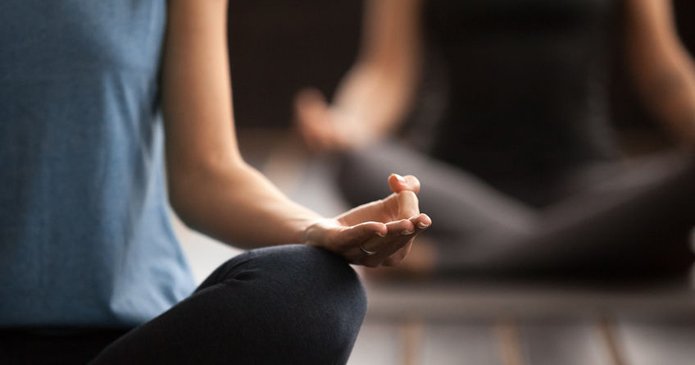 Mindfulness is described in many ways. Sometimes it is described as the development of a third-party observer in your mind that perceives the things your mind tends to do. That ‘meta-perspective’ the mind can develop can simply notice when our thoughts are busy, or go off on a distraction, and the noticing might bring us into the present moment. Sometimes mindfulness is described as a sense of peace and calm. Sometimes it is described as the integration of analytic and emotional qualities in the mind, or of somatic and mental experience, or the awareness of both context and detail at the same time. More spiritual ideas of mindfulness include a grounding in a state of love, non-judgment, compassion, and awareness, or a bliss that results from meditation.
Mindfulness is described in many ways. Sometimes it is described as the development of a third-party observer in your mind that perceives the things your mind tends to do. That ‘meta-perspective’ the mind can develop can simply notice when our thoughts are busy, or go off on a distraction, and the noticing might bring us into the present moment. Sometimes mindfulness is described as a sense of peace and calm. Sometimes it is described as the integration of analytic and emotional qualities in the mind, or of somatic and mental experience, or the awareness of both context and detail at the same time. More spiritual ideas of mindfulness include a grounding in a state of love, non-judgment, compassion, and awareness, or a bliss that results from meditation.
The truth is that mindfulness is borrowed from ancient spiritual traditions, and those traditions have a lot to say about what mindfulness actually is. While Western science has wanted to strip mindfulness of its spiritual roots so as to not promote any particular belief system or path, the secularization of mindfulness has led to some interesting interpretations about what it is and what it isn’t. One author describes mindfulness as the ability to choose which mindset you’re in, switching at will between emotional, analytic and creative dimensions of thought. That’s not really it. Even the idea of developing a third-party observer, if its not grounded in the body and connected to somatic experience, is not the full measure of mindfulness taught by many indigenous and spiritual traditions.
The best kind of mindfulness is grounded in the body, and doesn’t make a separation between the mind and somatic awareness. Otherwise, meditation can promote dissociation, and something known as ‘spiritual bypassing,’ which is simply escaping your issues, feelings and internal friction through transcendence. Transcendence can feel nice, and does have its place in a formal meditation practice, but a mistake is to confuse transcendence with the ability to abide in the mindful state. Pro tip: You always end up coming back to your baseline mental orientation anyways, so it’s valuable to learn how to subsist in peace despite experience, rather than to escape uncomfortable experience for a while.
In its ancient context, mindfulness is a component of meditation–an artifact, or a result, even–that can be achieved many different ways. Mindfulness practices can range from formal sitting meditation to chanting practices, dancing, walking, music, gardening and more. Almost any activity can become a mindful practice but it needs to have the ingredients and structure of a mindful practice.
In our classes, we help you understand how to become more mindful, and you get to try out and choose the practices that speak most to you. You learn the important common ingredients to mindful practice that show up in ancient traditions from all around the world. You learn to be grounded in your body, and in your experience, so you can be fully present in the moment and more easily able to tolerate the experiences life brings you.
Advanced students learn the segments of the spiritual growth journey as understood by many world traditions and with no need to adopt any particular belief system or practice. Our non-denominational groups help students get in touch with their own, native spirituality and growth process and experience greater depth in their journey to deepen resilience and find existential purpose and meaning in life.
If you’d like to join one of our meditation classes or spiritual groups, you can apply by filling out our contact form and we’ll be in touch to get to know you and invite you to join the group, class or event that fits you the best. Here at PRESENCE, meditation, mindfulness and spirituality are specialities, and we have extensive experience helping students of different levels and backgrounds deepen their practice and spiritual life. The study of spiritual growth methods also creates a sense of family and community among students because of the depth of feeling, purpose, experience, and of the practice itself. We value that sense of community here at PRESENCE at invite you to join us and get to know us!
TEACHERS: We have several teachers at PRESENCE who specialize in meditation and mindfulness. Founder John Howard is a longtime spiritual teacher who has taught nationally and trained many medical doctors, psychologists and health care practitioners in spiritual growth and mindfulness models. He has trained in many different systems including living in small indigenous villages in South America and Central Mexico, and with Cheyenne elders in the Native American tradition. Peter Craig is a longtime spiritual teacher and meditation instructor.


